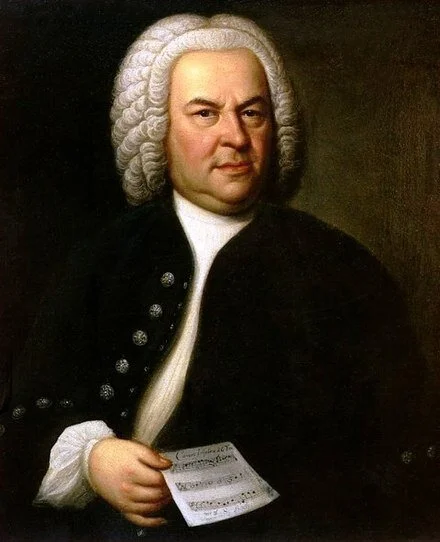Most of Johann Sebastian Bach's extant church music in Latin —settings of (parts of) the Mass ordinary and of the Magnificat canticle— dates from his Leipzig period (1723–50). Bach started to assimilate and expand compositions on a Latin text by other composers before his tenure as Thomaskantor in Leipzig, and he continued to do so after he had taken up that post. The text of some of these examples by other composers was a mixture of German and Latin: also Bach contributed a few works employing both languages in the same composition, for example his early Kyrie "Christe, du Lamm Gottes" [scores].[1]
The bulk of Bach's sacred music, many hundreds of compositions such as his church cantatas, motets, Passions, oratorios, four-part chorales and sacred songs, was set to a German text, or incorporated one or more melodies associated with the German words of a Lutheran hymn. His output of music on a Latin text, comprising less than a dozen of known independent compositions, was comparatively small: in Lutheranism, and Bach was a Lutheran, church services were generally in the native tongue, which was German for the places where Bach was employed. A few traditional Latin texts, such as the Magnificat and some excerpts of the Mass liturgy, had however not been completely banned from worship practice during the Protestant Reformation. It depended on local traditions whether any of such Latin texts were used in church services occasionally. In Leipzig, compared to Lutheran practice elsewhere, an uncharacteristic amount of Latin was used in church:[2] it included music on Latin texts being performed on ordinary Sundays,[3] on high holidays (Christmas, Easter, Pentecost), and the Magnificat also on Marian feasts (Annunciation, Visitation, Purification).
In his first years in Leipzig Bach produced a Latin Magnificat and several settings of the Sanctus. In 1733 he composed a large-scale Kyrie–Gloria Mass for the Catholic court in Dresden. Around the same time he produced the final version of his Magnificat. Probably around 1738–39 he wrote four more Kyrie–Gloria Masses, to a large extent based on earlier compositions. From around 1740 there was an increase of Bach copying and arranging stile antico Latin church music by other composers, which sheds light on a style shift towards more outspoken polyphonic and canonic structures in his own compositions in the last decade of his life.[4] In the last years of his life Bach extracted a cantata on a Latin text from his 1733 Kyrie–Gloria Mass, and finally integrated that Mass, and various other earlier compositions, into his Mass in B minor.
Most of Johann Sebastian Bach's extant church music in Latin - settings of (parts of) the Mass ordinary and of the Magnificat canticle- dates from his Leipzig period (1723-50). Bach started to assimilate and expand compositions on a Latin text by other composers before his tenure as Thomaskantor in Leipzig, and he continued to do so after he had taken up that post.

